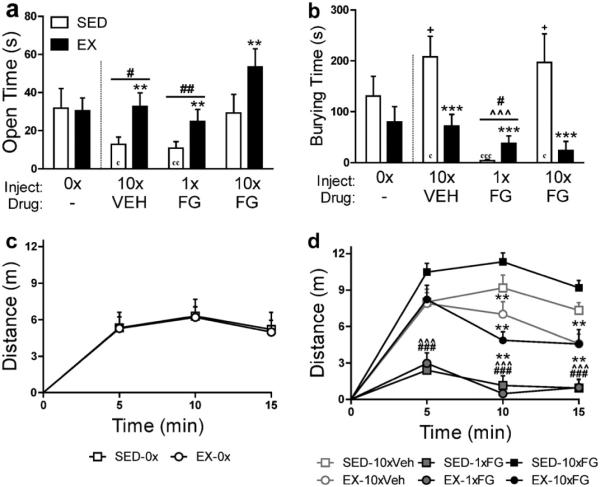Fig. 1.
Stress alters the benefit of exercise in tests of anxiety. Exercise produces anxiolytic-like behavior in the (a) elevated plus maze and (b) shock probe defensive burying test and facilitates locomotor habituation in the (c–d) open field only after exposure to repeated injection or pharmacological stress using the anxiogenic β-carboline FG7142 (7.5 mg/kg i.p. × 10 days), but not in the absence of these stressors or in the presence of stress induced by a high, acute dose of FG7142 (30 mg/kg i.p. × 1 day). Results obtained from Sciolino et al. (2012). Data are reported as mean ± SEM (n = 8–10). ***p < 0.001, **p < 0.01 vs. sedentary; ###p < 0.001, ##p < 0.01, #p < 0.05 vs. chronic FG7142; +p < 0.05 vs. exercise rats treated with chronic vehicle, both sedentary and exercise rats treated with acute FG7142, and exercise rats treated with chronic FG7142; ˆˆˆp < 0.001 vs. chronic vehicle; cccp < 0.001, ccp < 0.01, cp < 0.05 vs. pooled no inject groups. Abbreviations: EX, exercise; FG, FG7142; SED, sedentary; VEH, vehicle.

